
Antwerp: The Gem of Belgium
Discover Antwerp, Belgium's diamond capital, where history meets modernity in a vibrant cityscape, offering rich culture, world-class art, and culinary delights.
Antwerp, a city that effortlessly blends rich history with modern allure, is a must-visit destination in Belgium. Known as the diamond capital of the world, Antwerp sparkles with a unique charm that captivates every visitor. The city's historical roots are evident in its stunning architecture, from the majestic Antwerp Cathedral to the enchanting Grote Markt square, lined with guild houses that whisper tales of the past. Art lovers will find themselves in paradise as they explore the Rubenshuis, the former home of the famous Baroque painter Peter Paul Rubens, or wander through the Museum aan de Stroom (MAS), which showcases the city's maritime history. Antwerp is also a fashion hub, often referred to as the 'Paris of the North', where the avant-garde fashion scene is centered around the ModeNatie complex. Food enthusiasts can indulge in local delicacies such as Belgian waffles, chocolates, and the world-renowned Antwerp hand-cut fries. The city’s vibrant nightlife offers everything from cozy pubs serving Belgian beers to chic rooftop bars with stunning city views. With a rich tapestry of culture, history, and modern attractions, Antwerp is a city that promises an unforgettable experience to every traveler.
Local tips in Antwerp
- Visit the Antwerp Central Station, often considered one of the most beautiful railway stations in the world.
- Take a stroll along the Scheldt River, especially around sunset for breathtaking views.
- Explore the Antwerp Zoo, one of the oldest zoos in the world, located right in the city center.
- Try the local specialty, 'Antwerpse Handjes' – hand-shaped cookies or chocolates.
- Pick up a City Card for discounts on public transportation and entry to major attractions.
Neighbourhoods in Antwerp
Antwerp: The Gem of Belgium
Antwerp, a city that effortlessly blends rich history with modern allure, is a must-visit destination in Belgium. Known as the diamond capital of the world, Antwerp sparkles with a unique charm that captivates every visitor. The city's historical roots are evident in its stunning architecture, from the majestic Antwerp Cathedral to the enchanting Grote Markt square, lined with guild houses that whisper tales of the past. Art lovers will find themselves in paradise as they explore the Rubenshuis, the former home of the famous Baroque painter Peter Paul Rubens, or wander through the Museum aan de Stroom (MAS), which showcases the city's maritime history. Antwerp is also a fashion hub, often referred to as the 'Paris of the North', where the avant-garde fashion scene is centered around the ModeNatie complex. Food enthusiasts can indulge in local delicacies such as Belgian waffles, chocolates, and the world-renowned Antwerp hand-cut fries. The city’s vibrant nightlife offers everything from cozy pubs serving Belgian beers to chic rooftop bars with stunning city views. With a rich tapestry of culture, history, and modern attractions, Antwerp is a city that promises an unforgettable experience to every traveler.
When is the best time to go to Antwerp?
Iconic landmarks you can’t miss
Zoo Antwerpen
Experience the charm of Zoo Antwerpen, a historic zoo in the heart of Belgium, showcasing thousands of animals and promoting wildlife conservation.
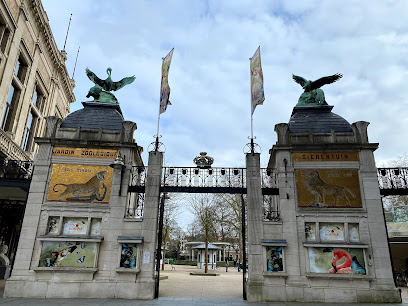
MAS - Museum aan de Stroom
Discover Antwerp's maritime history and cultural treasures at MAS - Museum aan de Stroom, featuring stunning architecture and captivating exhibitions.

Cathedral of Our Lady
Explore the breathtaking Cathedral of Our Lady in Antwerp, a UNESCO World Heritage site showcasing stunning Gothic architecture and exquisite art.
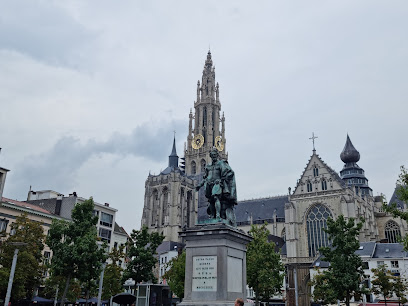
Het Steen
Discover the medieval charm and captivating history of Het Steen, Antwerp's iconic fortress and museum by the Scheldt River.
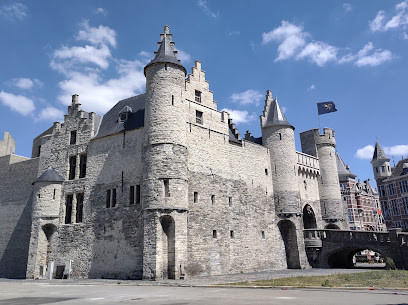
Station Antwerpen-Centraal
Experience the stunning architecture and vibrant atmosphere of Antwerp Central Station, a gateway to Belgium's rich history and culture.

Rubenshuis
Explore Rubenshuis in Antwerp, the opulent former residence of Peter Paul Rubens, showcasing exquisite Baroque art and architectural beauty.
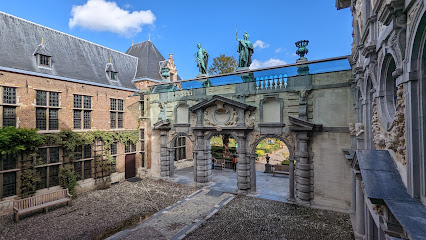
Chocolate Nation
Explore the enchanting world of chocolate at Chocolate Nation, Antwerp's premier chocolate museum showcasing the art and history of Belgian chocolate.
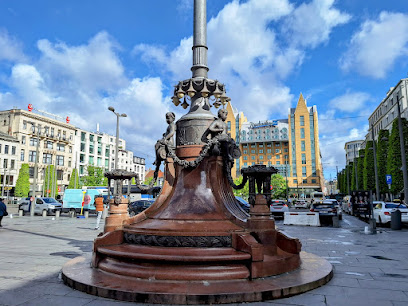
Fort Breendonk
Explore Fort Breendonk, a significant fortress and museum in Willebroek, Belgium, that reflects on wartime history and human resilience.
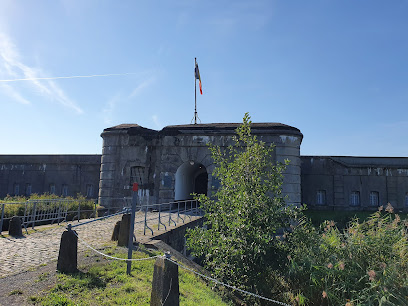
Antwerp Central Train Station
Discover the architectural beauty and vibrant atmosphere of Antwerp Central Train Station, a must-visit transit hub for travelers in Belgium.
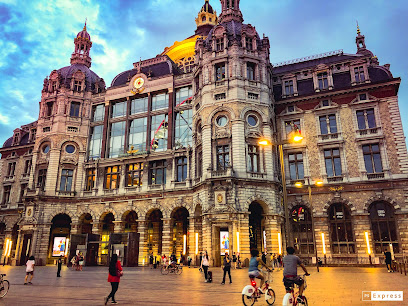
Red Star Line Museum
Explore the Red Star Line Museum in Antwerp, where the powerful stories of migration come to life through immersive exhibits and artifacts, reflecting the journey for a better future.
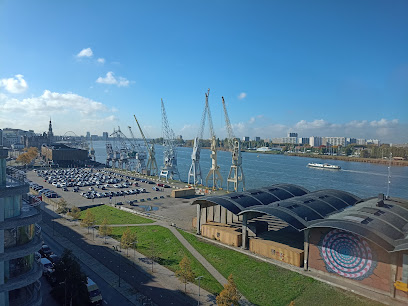
Middelheim Museum
Discover the enchanting blend of modern art and nature at Middelheim Museum in Antwerp, a premier open-air sculpture park.
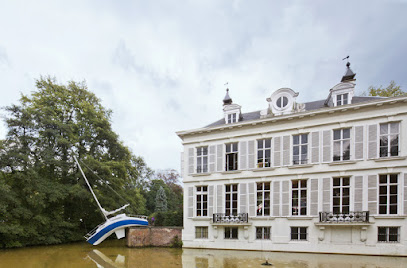
Saint Charles Borromeo Church
Explore the architectural beauty and cultural significance of Saint Charles Borromeo Church, a must-visit landmark in Antwerp, Belgium.
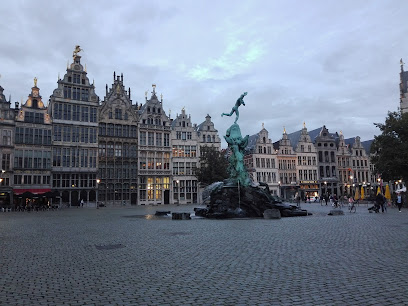
Brabo's Monument
Explore the enchanting Brabo's Monument in Antwerp, a cultural landmark steeped in legend and history, surrounded by the vibrant atmosphere of the Grote Markt.
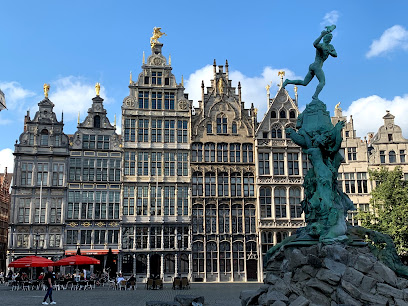
Handelsbeurs Antwerpen
Discover the cultural heartbeat of Antwerp at Handelsbeurs Antwerpen, where history meets contemporary creativity in a stunning event venue.
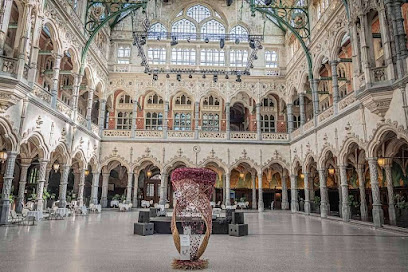
ibis Antwerpen Centrum
Discover modern comfort at Ibis Antwerpen Centrum, your perfect base for exploring the vibrant culture and history of Antwerp, Belgium.

Unmissable attractions to see
Grand Place
Explore the stunning Grand Place in Brussels, a UNESCO World Heritage site known for its beautiful architecture and vibrant cultural atmosphere.
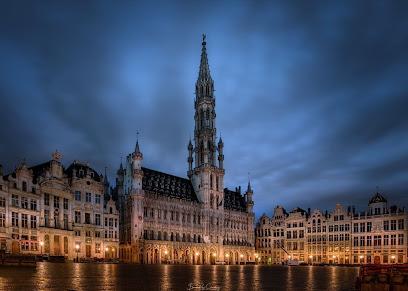
Manneken Pis
Experience the whimsical charm of Manneken Pis, an iconic fountain in Brussels that embodies the city's irreverent spirit and rich cultural heritage.
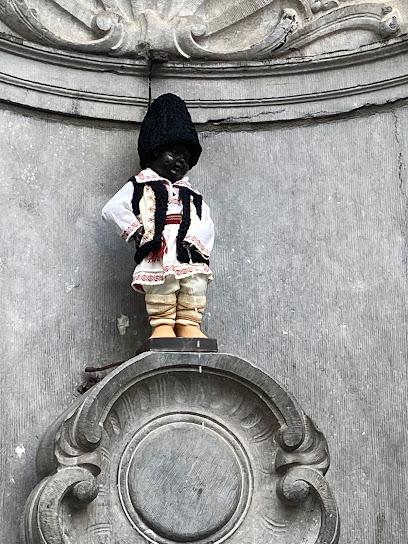
Royal Gallery of Saint Hubert
Explore the Royal Gallery of Saint Hubert - a stunning shopping arcade in Brussels filled with luxury boutiques, exquisite chocolates, and delightful cafes.
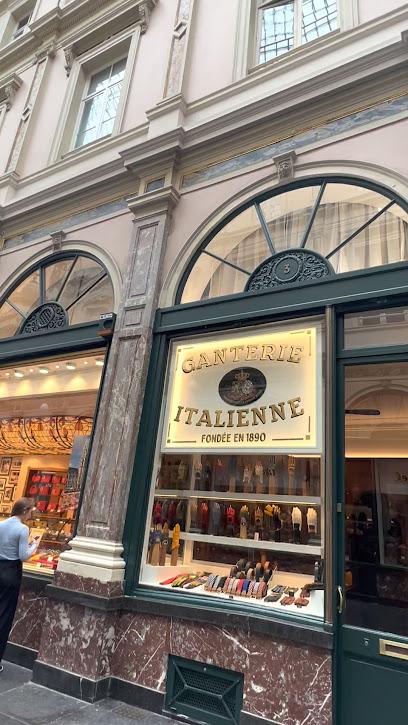
Parc du Cinquantenaire
Discover the stunning Parc du Cinquantenaire in Brussels: a blend of history, culture, and nature awaits you in this beautiful urban park.

Delirium Café
Discover the lively Delirium Café in Brussels, home to over 2,000 beers, vibrant atmosphere, and a true taste of Belgian beer culture.
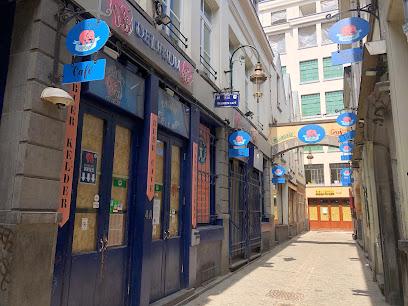
Parc de Bruxelles
Discover the beauty and tranquility of Parc de Bruxelles, a lush oasis in the heart of Brussels, perfect for relaxation and exploration.
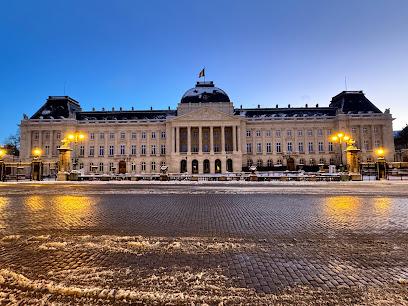
MAS - Museum aan de Stroom
Explore the MAS - Museum aan de Stroom in Antwerp, a cultural hub showcasing the city's rich maritime history and stunning views from its rooftop.
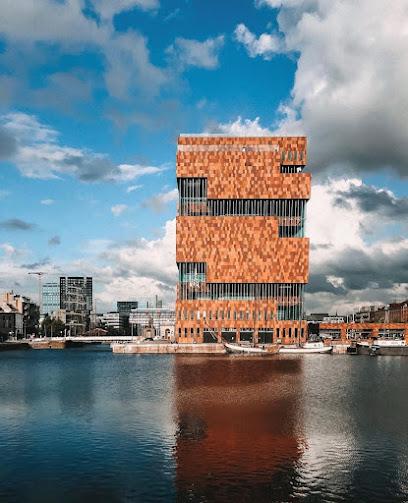
Royal Palace of Brussels
Explore the Royal Palace of Brussels, a stunning cultural landmark showcasing the rich history and art of Belgium's monarchy.
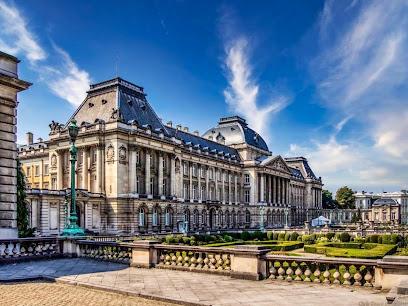
Royal Belgian institute of Natural Sciences
Explore the marvels of nature at the Royal Belgian Institute of Natural Sciences in Brussels, where discovery meets education in a captivating museum experience.
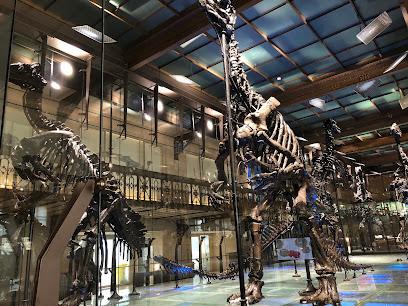
Brussels Expo
Experience the dynamic spirit of Brussels at the Brussels Expo, a premier destination for exhibitions and cultural events in Belgium.
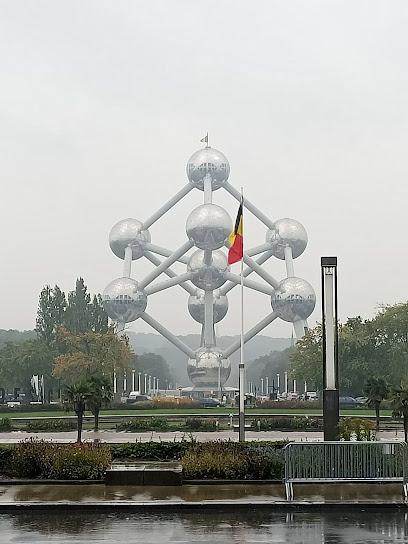
Cathedral of Our Lady
Visit the Cathedral of Our Lady in Antwerp, a stunning Gothic masterpiece adorned with Rubens' artwork and a UNESCO World Heritage site.
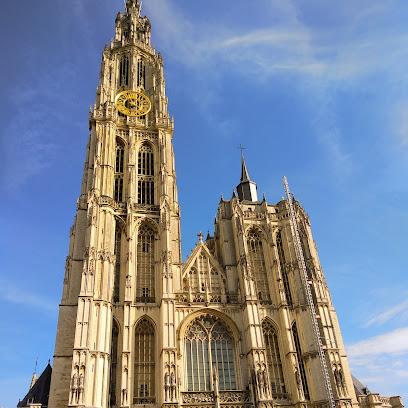
Autoworld
Explore the fascinating world of automobiles at Autoworld in Brussels, showcasing over 250 vintage and modern vehicles in a stunning museum setting.
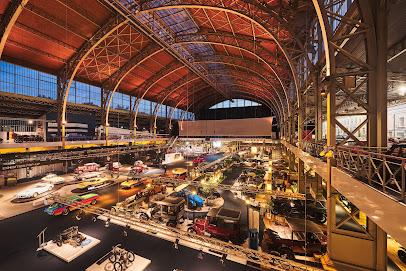
Royal Museums of Fine Arts of Belgium
Explore the Royal Museums of Fine Arts of Belgium, a cultural haven showcasing masterpieces from the Middle Ages to contemporary art.
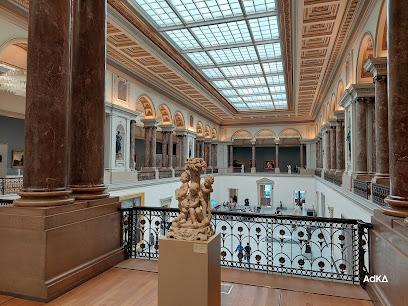
Jeanneke Pis
Discover the whimsical charm of Jeanneke Pis, a delightful fountain in Brussels that embodies the city's playful spirit and rich cultural heritage.
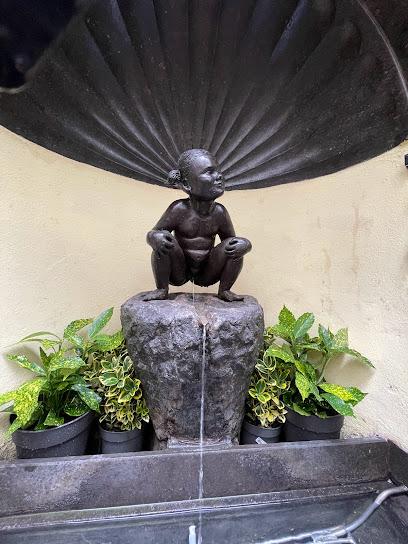
Provincial Domain Rivierenhof
Experience the serene beauty of Provincial Domain Rivierenhof, a lush park in Antwerp with scenic lakes and vibrant gardens.
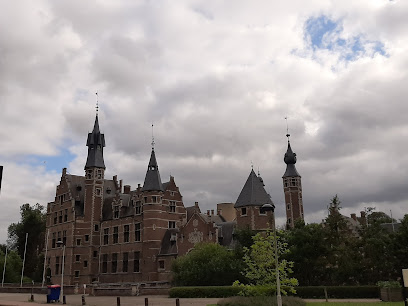
Essential places to dine
Elfde Gebod
Discover the unique charm and exquisite flavors at Elfde Gebod - where culinary art meets iconic decor in the heart of Antwerp.
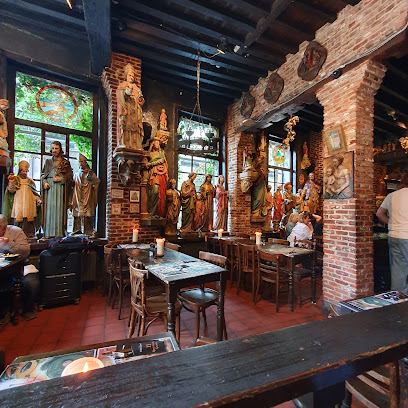
Fish A'Gogo
Discover Antwerp's Seafood Delight: Fresh Fish & Chips at Fish A'Gogo – A Must-Try for Food Lovers!
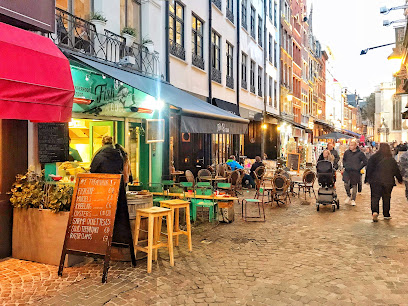
Meat Factory
Experience culinary excellence at Meat Factory in Antwerp - where high-quality meats meet exceptional service in a vibrant atmosphere.

The Jane
Experience unparalleled fine dining at The Jane in Antwerp - where culinary artistry meets stunning ambiance for an unforgettable meal.
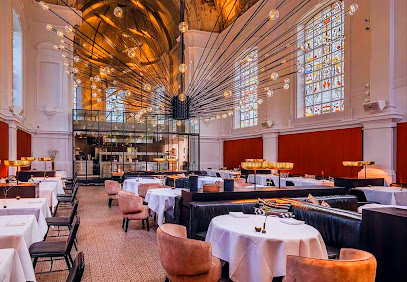
De Zeven Schaken
Discover De Zeven Schaken: A delightful fusion of Belgian and French cuisine in the heart of Antwerp's vibrant dining scene.
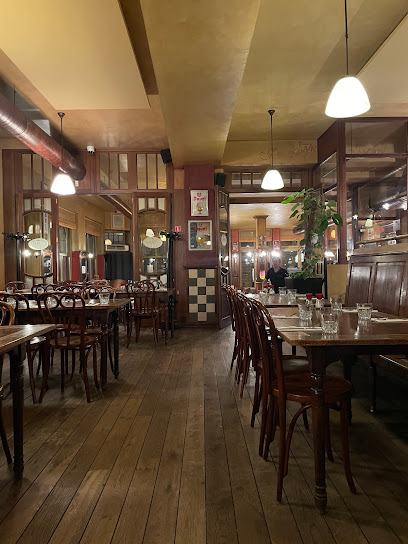
Bia Mara
Experience authentic fish and chips at Bia Mara in Antwerp—where quality meets flavor in a cozy atmosphere perfect for all diners.
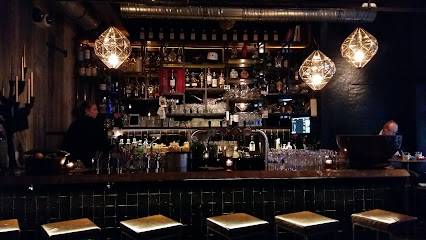
De Peerdestal | Restaurant Antwerpen
Experience exquisite Belgian and French cuisine at De Peerdestal in Antwerp – a culinary delight with a cozy ambiance.
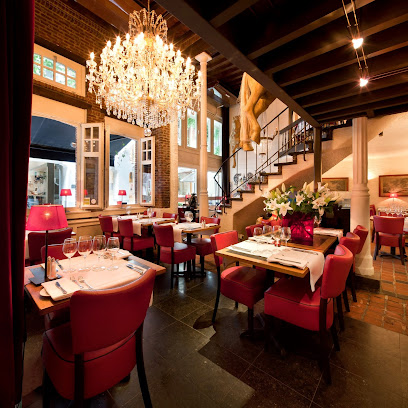
De Bomma
Experience authentic Belgian cuisine at De Bomma in Antwerp – where tradition meets flavor in every dish.
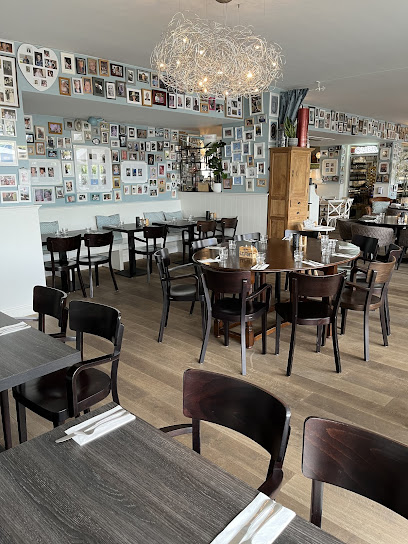
De Pottekijker
Discover De Pottekijker in Antwerp – where traditional Belgian flavors meet exceptional grilling techniques for an unforgettable dining experience.
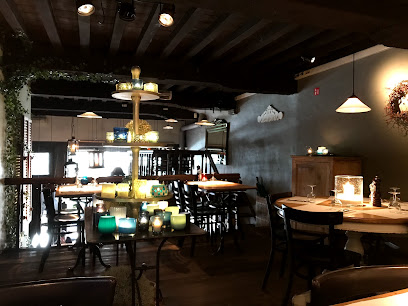
Tapabar
Discover authentic Spanish tapas and cocktails at Tapabar in Antwerp - where vibrant flavors meet lively ambiance.
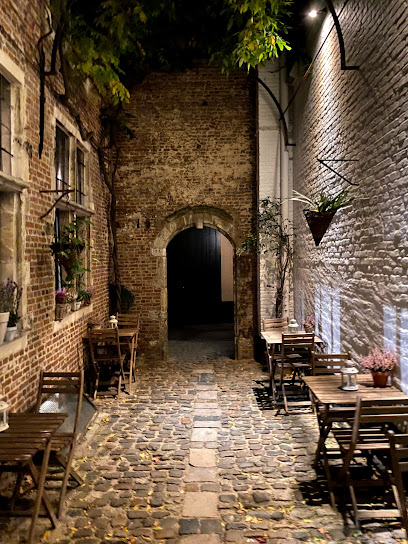
Baret Bar & Food
Discover Baret Bar & Food in Antwerp – where vibrant tapas meet creative cocktails in a cozy atmosphere perfect for any occasion.
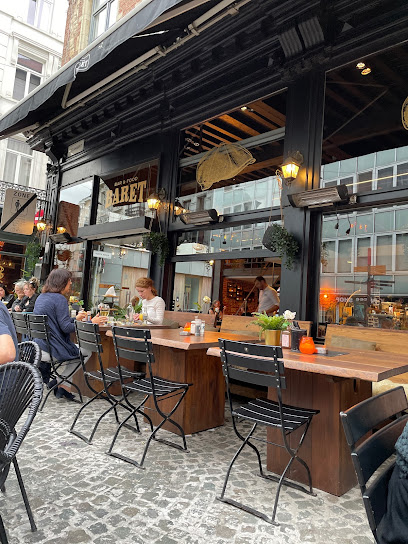
't Hofke
Experience authentic Belgian cuisine at 't Hofke in Antwerp, where tradition meets culinary excellence in a charming setting.
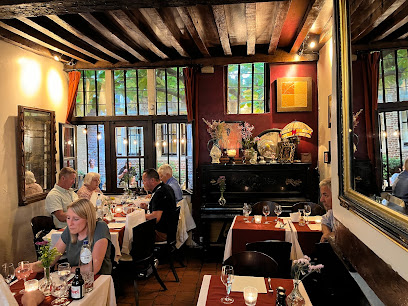
Satay
Discover authentic Southeast Asian cuisine at Satay in Antwerp – a must-visit destination for food lovers seeking vibrant flavors.
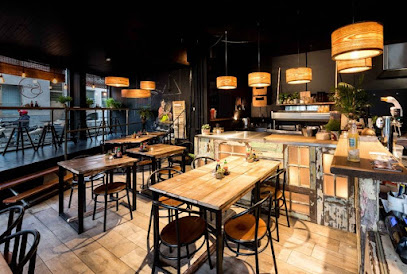
Grand Café De Rooden Hoed
Discover the culinary charm of Grand Café De Rooden Hoed in Antwerp - where traditional flavors meet modern elegance.
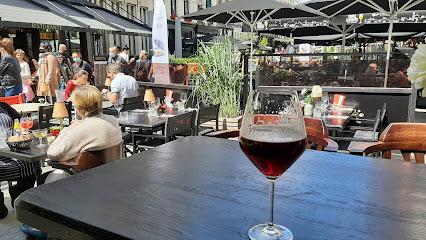
De Arme Duivel
Discover De Arme Duivel: Your go-to destination for authentic Belgian cuisine and warm hospitality in the heart of Antwerp.
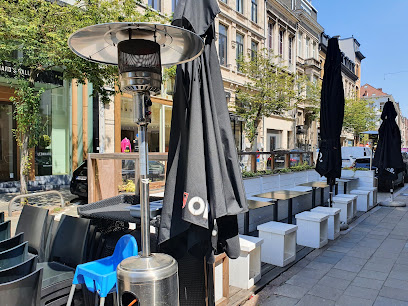
Markets, malls and hidden boutiques
Stadsfeestzaal
Discover the architectural beauty and diverse shopping experiences at Stadsfeestzaal, a premier destination in Antwerp's vibrant city center.
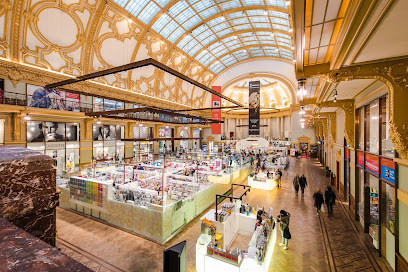
Grand Bazar Antwerp
Explore the vibrant shopping and dining scene at Grand Bazar Antwerp, a must-visit destination for tourists seeking local culture and unique finds.
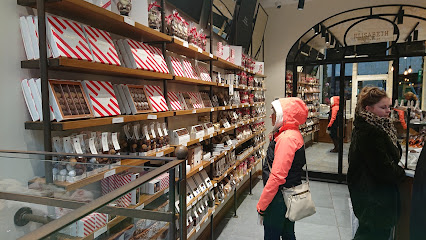
Jelly Jazz @ Grand Bazar
Explore Jelly Jazz @ Grand Bazar in Antwerp for unique gifts, handcrafted souvenirs, and beautiful maps that showcase Belgium's rich culture and history.
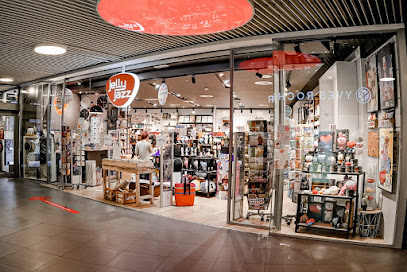
Dille & Kamille - Antwerpen
Discover the enchanting Dille & Kamille gift shop in Antwerp, where unique home goods, kitchen supplies, and whimsical toys await every visitor.
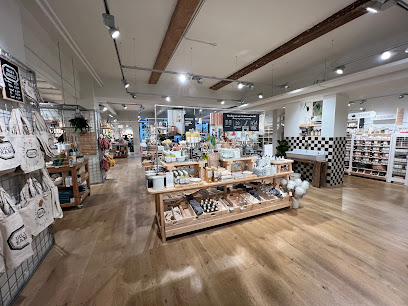
Juttu
Explore Juttu in Antwerp for unique gifts, stylish clothing, and a touch of local culture that will enhance your travel experience.
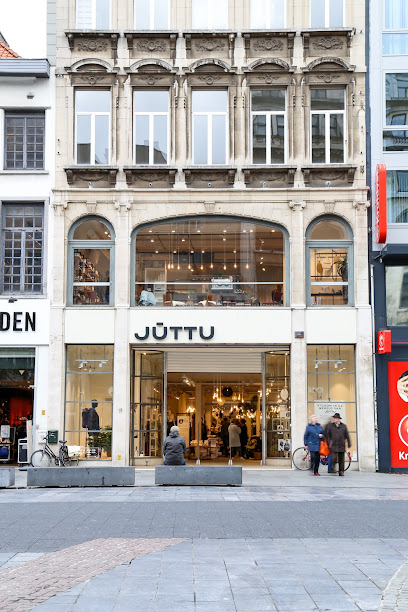
Arte Antwerp
Explore the best in contemporary fashion at Arte Antwerp, where style meets quality in the heart of the city.
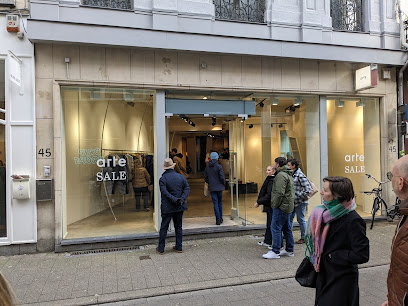
Louis Vuitton Antwerp
Explore the elegance of Louis Vuitton Antwerp, where luxury leather goods and fashion accessories meet timeless style in the heart of Belgium.
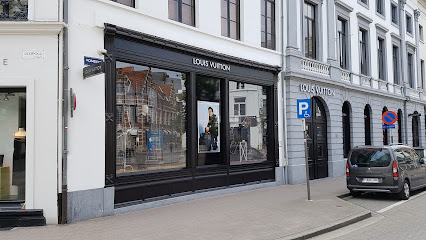
Urban Outfitters
Explore Urban Outfitters in Antwerp for a unique shopping experience featuring trendy clothing, stylish gifts, and chic home decor.
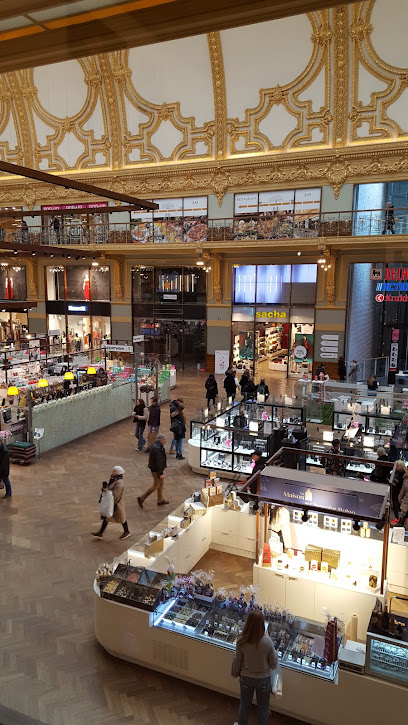
The Other Shop
Discover a literary paradise at The Other Shop in Antwerp, where unique books and gifts await every curious traveler.
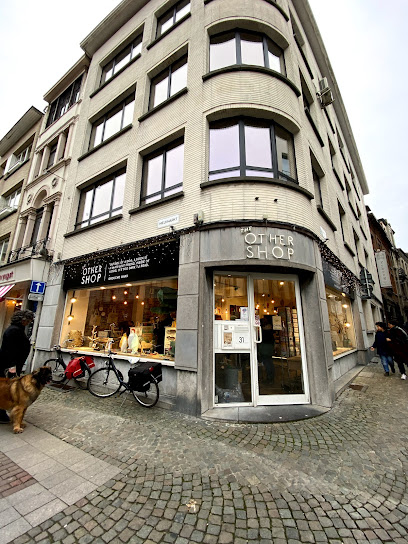
MOOSE in the CITY
Discover MOOSE in the CITY, Antwerp's charming store for Nordic fashion, unique home decor, and delightful toys in a vibrant shopping destination.
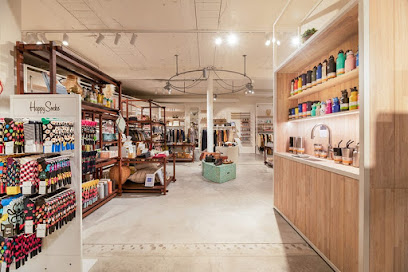
Think Twice
Explore Antwerp's Think Twice for sustainable fashion, unique clothing finds, and a chance to support charitable initiatives.
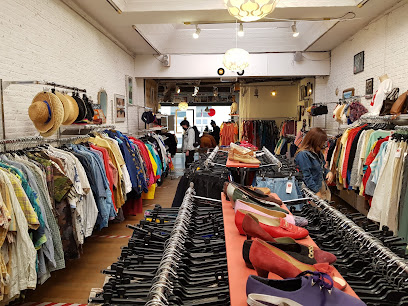
4GEEKS
Explore 4GEEKS in Antwerp for unique souvenirs and local crafts that capture the essence of Belgian culture and creativity.
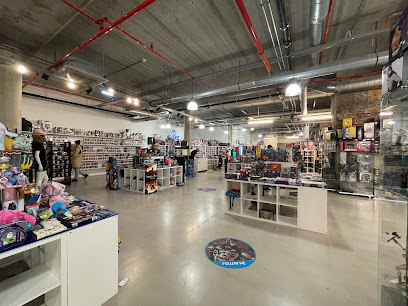
St Vincents
Discover a unique blend of contemporary art and gourmet delights at St Vincents, Antwerp's cultural gem.
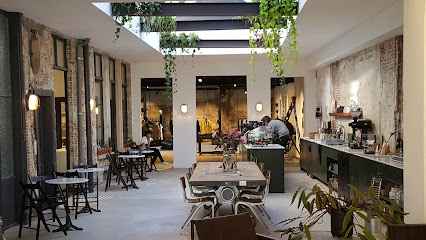
SeventyOne
Discover SeventyOne in Antwerp: A charming gift shop offering stylish women's clothing, unique gifts, and fashionable footwear for the discerning traveler.
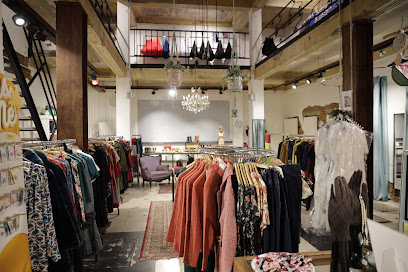
Blackwitch Gothic Shop
Explore Blackwitch Gothic Shop in Antwerp for unique gothic fashion, accessories, and home decor that embrace the darkly beautiful.
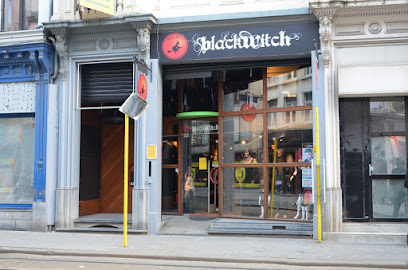
Essential bars & hidden hideouts
Dogma
Discover Dogma in Antwerp: A cocktail bar where unique blends and vibrant ambience create unforgettable experiences.
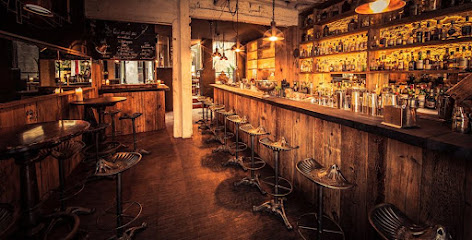
Beerlovers Bar
Discover the vibrant beer culture of Antwerp at Beerlovers Bar, where a world of brews awaits every enthusiast.
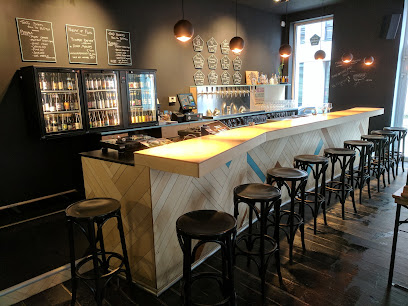
Cabron
Experience the vibrant nightlife of Antwerp at Cabron, a bar known for its great drinks and lively atmosphere.
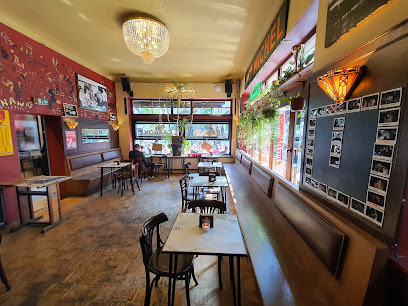
Cafe Kulminator - Antwerpen
Experience the unique charm and extensive beer selection at Cafe Kulminator, a must-visit bar in Antwerp for all beer enthusiasts.
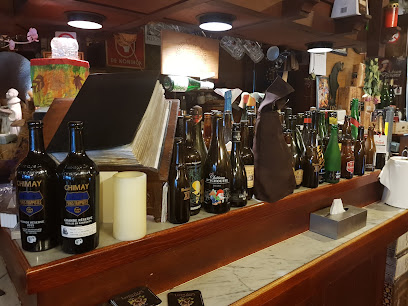
Parisien Antwerp Bar & Lounge - Antwerpen
Experience the vibrant nightlife of Antwerp at the Parisien Antwerp Bar & Lounge, home to exquisite cocktails and a stylish atmosphere.
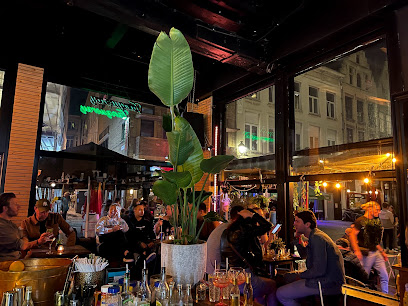
Barok Antwerp
Explore the vibrant cocktail scene at Barok Antwerp, where innovative drinks and a chic atmosphere create unforgettable nightlife experiences.
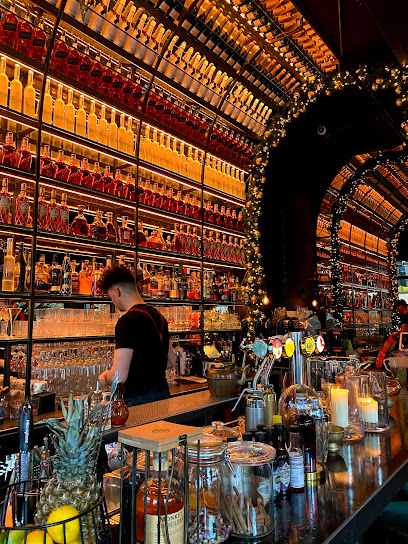
BAR BASIL
Experience the vibrant energy of Antwerp at Bar Basil, a cocktail bar and coffee shop perfect for unwinding and socializing with friends.
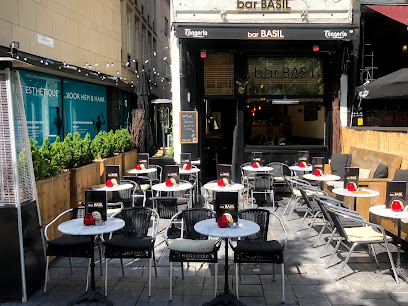
Café Pardaf - craft beer & traditionals
Experience the best of Belgian craft beer and traditional cuisine at Café Pardaf in Antwerp, a cozy pub that delights every visitor.
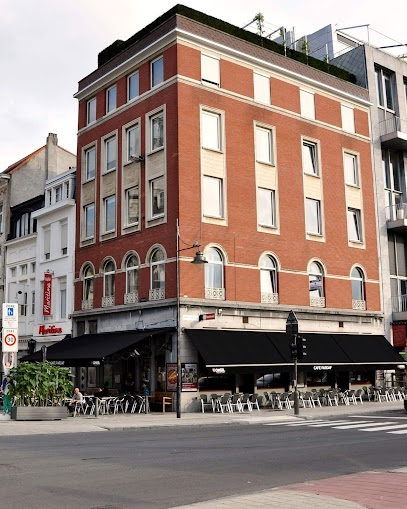
BELROY's Bijou
Experience the sophistication of BELROY's Bijou, a premier cocktail bar in Antwerp, offering expertly crafted drinks in a chic atmosphere.
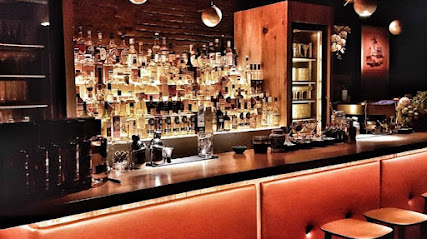
bar Deco
Experience the vibrant atmosphere of Bar Deco, a top bar in Antwerp, offering delicious cocktails and a great selection of coffee in a cozy setting.
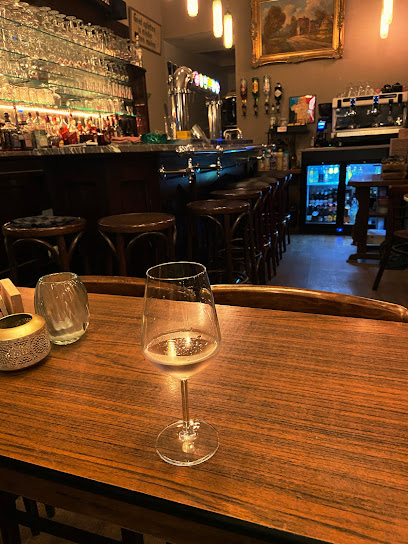
Jones & Co
Discover the vibrant atmosphere of Jones & Co, Antwerp's top cocktail bar, where innovative drinks meet a stylish ambiance.

De Vuile Was
Dive into the vibrant nightlife at De Vuile Was, Antwerp's premier cocktail bar and dance club, where unforgettable evenings await.
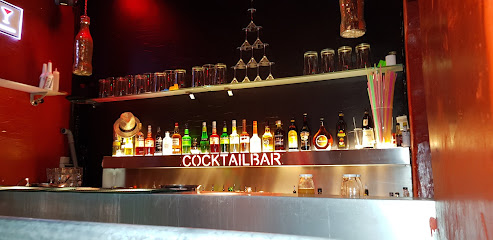
Ernst Pub
Discover the heart of Antwerp's nightlife at Ernst Pub, where local beers and vibrant atmosphere await you in a charming riverside setting.

't Waagstuk
Discover the cozy charm of 't Waagstuk, a vibrant bar in Antwerp offering a delightful selection of drinks and a warm atmosphere for relaxation.
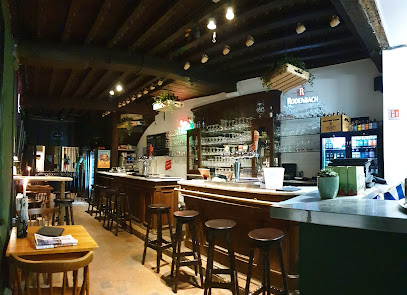
De Ware Jacob
Experience the vibrant spirit of Antwerp at De Ware Jacob, a charming bar offering a delightful selection of drinks in a cozy ambiance.

Local Phrases
-
- HelloHallo
[HAH-loh] - GoodbyeTot ziens
[tot zeens] - YesJa
[ya] - NoNee
[nee] - Please/You're welcomeAlstublieft
[ahl-stuu-bleeft] - Thank youDank u
[dahnk oo] - Excuse me/SorrySorry
[SOH-ree] - How are you?Hoe gaat het?
[hoo gaat het] - Fine. And you?Goed. En met jou?
[khoot. en met yow] - Do you speak English?Spreekt u Engels?
[spreekt oo engels] - I don't understandIk begrijp het niet
[ik buh-khreyp het neet]
- HelloHallo
-
- I'd like to see the menu, pleaseIk zou graag de menukaart zien, alstublieft
[ik zow khrahkh deh meh-noo-kahrt zeen, ahl-stuu-bleeft] - I don't eat meatIk eet geen vlees
[ik eet khayn vleys] - Cheers!Proost!
[prohst] - I would like to pay, pleaseIk zou graag willen betalen, alstublieft
[ik zow khrahkh vil-luhn buh-tah-luhn, ahl-stuu-bleeft]
- I'd like to see the menu, pleaseIk zou graag de menukaart zien, alstublieft
-
- Help!Help!
[help] - Go away!Ga weg!
[ga wegh] - Call the Police!Bel de politie!
[bel duh poh-lee-see] - Call a doctor!Bel een dokter!
[bel ayn dohk-tuhr] - I'm lostIk ben verdwaald
[ik ben vuhr-dwahld] - I'm illIk ben ziek
[ik ben zyeek]
- Help!Help!
-
- I'd like to buy...Ik zou graag kopen...
[ik zow khrahkh koh-puhn] - I'm just lookingIk kijk alleen maar
[ik kayk a-leyn mahr] - How much is it?Hoeveel kost het?
[hoo-veyl kost het] - That's too expensiveDat is te duur
[dat is tuh dyoor] - Can you lower the price?Kunt u de prijs verlagen?
[kunt oo duh prays vuh-rah-khun]
- I'd like to buy...Ik zou graag kopen...
-
- What time is it?Hoe laat is het?
[hoo laht is het] - It's one o'clockHet is een uur
[het is ayn uhr] - Half past (10)Half tien
[hahlf teen] - MorningOchtend
[ohk-tuhnt] - AfternoonNamiddag
[nah-mi-dahkh] - EveningAvond
[ah-vohnt] - YesterdayGisteren
[khis-tuh-run] - TodayVandaag
[vahn-dahkh] - TomorrowMorgen
[mohr-khun] - 1Een
[ayn] - 2Twee
[tvay] - 3Drie
[dree] - 4Vier
[veer] - 5Vijf
[vayf] - 6Zes
[zehs] - 7Zeven
[zay-vuhn] - 8Acht
[ahkht] - 9Negen
[nay-khun] - 10Tien
[teen]
- What time is it?Hoe laat is het?
-
- Where's a/the...?Waar is de...?
[vahr is duh] - What's the address?Wat is het adres?
[vaht is het ah-dres] - Can you show me (on the map)?Kunt u me dat tonen (op de kaart)?
[kunt oo muh daht toh-nuhn (op duh kahrt)] - When's the next (bus)?Wanneer is de volgende (bus)?
[vahn-ehr is duh vohl-huhn-duh (bus)] - A ticket (to ....)Een kaartje (naar ....)
[ayn kahrt-yuh (nahr)]
- Where's a/the...?Waar is de...?
History of Antwerp
-
Antwerp's origins can be traced back to the 2nd century AD when it was a small Gallo-Roman settlement. As the Roman Empire expanded, Antwerp grew in significance due to its strategic position along the River Scheldt, serving as a crucial trading post.
-
During the Middle Ages, Antwerp flourished as a major commercial hub in Europe. By the 12th century, it became an important center for the cloth trade. The construction of the Cathedral of Our Lady, which began in 1352, symbolized the city's growing wealth and importance.
-
The 16th century marked Antwerp's Golden Age during the Renaissance. It became the leading economic and cultural center of Europe, attracting artists, merchants, and scholars. The Antwerp Stock Exchange, established in 1460, was the world's first purpose-built commodity exchange.
-
Antwerp's prosperity came to a halt in 1576 during the Spanish Fury, when Spanish troops sacked the city, leading to significant loss of life and economic decline. The Treaty of Antwerp in 1609, part of the Twelve Years' Truce, temporarily halted hostilities, but the city's influence waned.
-
After a period of decline, Antwerp experienced a revival in the 19th century. The construction of new docks and the expansion of the port facilitated the growth of industry and trade. The city also saw cultural developments, with the establishment of institutions like the Royal Academy of Fine Arts.
-
Antwerp played a crucial role during World War II, particularly during the Battle of the Scheldt in 1944. After the war, the city underwent extensive reconstruction. The port was modernized, and Antwerp emerged as a key player in global trade once again.
-
Today, Antwerp is known for its vibrant culture, thriving arts scene, and significant economic contributions. It remains one of the largest ports in the world and is renowned for its diamond trade. The city's rich history is celebrated through its museums, architecture, and festivals.
Antwerp Essentials
-
Antwerp is well-connected by air, rail, and road. The nearest airport is Brussels Airport (BRU), approximately 45 kilometers away. From there, you can take a direct train to Antwerp Central Station, which takes about 30 minutes. Alternatively, Antwerp International Airport (ANR) is located just 5 kilometers from the city center and serves a limited number of destinations. By train, Antwerp is accessible from major European cities like Paris, Amsterdam, and London via high-speed trains. If you're driving, the city is easily reachable via the E19, E17, and E313 motorways.
-
Antwerp offers a variety of transportation options. The city has an extensive tram and bus network operated by De Lijn, which covers most attractions and neighborhoods. Single tickets, day passes, and multi-day passes can be purchased at vending machines, kiosks, or via the De Lijn app. Biking is also popular, and the city offers a bike-sharing program called Velo. Taxis are available but can be expensive; ridesharing services like Uber are also operational in Antwerp. For a scenic experience, consider taking a ferry across the River Scheldt.
-
Belgium uses the Euro (€) as its currency. Credit and debit cards are widely accepted, but it's advisable to carry some cash, especially for small purchases or in less touristy areas. ATMs are readily available throughout the city. Contactless payment methods, including Apple Pay and Google Pay, are also commonly accepted.
-
Antwerp is generally safe for tourists, but it’s wise to take standard precautions. The area around the central station can be a bit sketchy at night, so be cautious. Pickpocketing can occur in crowded areas like tourist attractions and public transport. Avoid walking alone at night in poorly lit areas and keep an eye on your belongings. Always use reputable taxi services or ridesharing apps.
-
In case of an emergency, dial 112 for police, fire, or medical assistance. Antwerp has several hospitals with emergency services, including ZNA Stuivenberg and UZA (University Hospital Antwerp). Pharmacies are readily available, many of which have extended hours. It's advisable to have travel insurance that covers medical emergencies.
-
Fashion: Do dress smart-casual; Antwerp is known for its fashion scene, so stylish attire is appreciated. Avoid overly casual or revealing clothing in upscale restaurants. Religion: Do respect religious sites by dressing modestly and maintaining a quiet demeanor. Public Transport: Do validate your ticket before boarding trams and buses. Don't eat or drink while on public transport. Greetings: Do greet people with a handshake. A kiss on the cheek is common among friends. Eating & Drinking: Do try local dishes like 'moules-frites' and Belgian waffles. Don't forget to tip in restaurants, usually around 10%. Avoid talking loudly in public places.
-
To experience Antwerp like a local, visit the 'Meir' shopping street for a mix of international brands and local boutiques. Explore the 'Zuid' district for its trendy bars, restaurants, and art galleries. Don't miss the local markets like 'Vogelenmarkt' held every Sunday. For a unique experience, visit the 'MAS' museum and take in the panoramic views from its rooftop. Engage with locals in cafes and try to learn a few phrases in Dutch; it’s highly appreciated.
Trending Landmark in Antwerp
-
Zoo Antwerpen
-
MAS - Museum aan de Stroom
-
Cathedral of Our Lady
-
Het Steen
-
Station Antwerpen-Centraal
-
Rubenshuis
-
Chocolate Nation
-
Fort Breendonk
-
Antwerp Central Train Station
-
Red Star Line Museum
-
Middelheim Museum
-
Saint Charles Borromeo Church
-
Brabo's Monument
-
Handelsbeurs Antwerpen
-
ibis Antwerpen Centrum
Nearby Cities to Antwerp
-
Things To Do in Mechelen
-
Things To Do in Aalst
-
Things To Do in Brussels
-
Things To Do in Leuven
-
Things To Do in Ghent
-
Things To Do in Louvain-la-Neuve
-
Things To Do in Hasselt
-
Things To Do in Eindhoven
-
Things To Do in Rotterdam
-
Things To Do in Knokke-Heist
-
Things To Do in Genk
-
Things To Do in Bruges
-
Things To Do in Zeebrugge
-
Things To Do in Delft
-
Things To Do in Blankenberge
















